Nomad Culture in Central Asia
Central Asia's Nomadic Culture
Central Asia, a big region historically known as the heart of nomadic civilisations, includes Kazakhstan, Kyrgyzstan, Uzbekistan, Turkmenistan, and Tajikistan. The nomadic way of life, deeply connected to the history of these nations, has shaped their traditions, social structures, and modern identities.
Historically, the people of Central Asia were pastoral nomads, depending on livestock such as horses, sheep, and camels, and moving seasonally in search of fresh pastures. Urbanization has changed many parts of life and the way of the nomadic heritage while remaining central to the cultures of the five Central Asian republics.
The history of Central Asian nomads is deeply connected with the region’s geography, politics, and culture. Central Asia is the most landlocked region in the world and, therefore is characterized by wide steppes, rugged mountains, and arid deserts. These challenging landscapes and harsh climatic conditions made conventional farming difficult but were ideally suited for pastoralism, leading to the development of nomadic communities that thrived through livestock herding and seasonal migrations.
Nomad history in Central Asia
Nomadic communities in Central Asia extend a long time ago according to the evidence dating from as early as the Bronze Age (circa 3,000 BCE). Early nomads in the region were largely horse-mounted riders and herders and were in the habit of roaming in search of grazing for the animals. Those movements throughout the vast steppes became the root of their economy and culture. They were known for their horsemanship, archery, and war-fighting ability, and their way of life was adapted to the harsh but fertile environment of the steppes
The Scythians and Saka
From the seventh to the third centuries B.C., this region was home to numerous tribes known as the Scythians by the Greeks and the Sakas by the Persians.
The Scythians, who lived between 800 BCE and 200 BCE, were a warrior society that lived in the steppes of Kazakhstan, southern Russia, and Central Asia. They were famous for their horse riding and archery skills, and their society greatly influenced later nomadic societies.
While the Saka, another of the region’s nomadic peoples, were related to the Scythians but were interested primarily in farming and herding. They were also a key player in the region, trading with early empires like the Achaemenid Persian Empire and later the Greco-Bactrian Kingdom. Later during the Middle Ages, Central Asia became the hub of some of the most powerful and longest-lasting nomadic empires.
The Turkic
In the 6th and 7th centuries, the Turks emerged as a major nomadic force in Central Asia. The Göktürk Khaganate (552–744 CE) was one of the earliest and most powerful Turkic empires, covering a large area of Central Asia. The Turks, like their predecessors, relied heavily on their horsemen and possessed a sophisticated social organization based on tribes and clans. They also played a significant part in the Silk Road trade as middlemen between the East and the West
The Mongols
The Mongol Empire, founded by Genghis Khan in the early 13th century, was perhaps the most significant nomadic empire in world history. The Mongols were initially from the Mongolian steppes but expanded to encompass all of Central Asia and much more, leaving an empire that stretched from China to Europe. The military genius of Genghis Khan, combined with his ability to unite disparate Mongol tribes, formed one of the greatest empires in history.
Mongol domination effected radical transformations in Central Asia, including the establishment of new political systems and trade networks, and the dissemination of more advanced technologies and cultural interactions. The Mongol conquest also introduced destruction and devastation into many settled civilizations in the region, for example, the Khwarezmian Empire and a number of Persian and Central Asian cities.
Following the Mongol Empire, new confederations and groups of nomads appeared across Central Asia. Kazakhs, Uzbeks, and Kyrgyz were some of the major groups that developed as distinct nomadic tribes. The Kazakh Khanate, which was founded in the 15th century, emerged from the fragments of the Mongol Empire and its decline. Animal and especially horse husbandry, cattle herding, and sheep occupied the Kazakhs. Then there is the Uzbeks that emerged during the 15th century under Timur (Tamerlane). Although originally nomadic, the Uzbeks established several settled states in Central Asia like the Khanate of Bukhara. And the Kyrgyz were a Turkic nomadic nation who roamed across the Tian Shan mountains. They are renowned for their horsemanship and epic poetry tradition, and their nomadic heritage remains part of Kyrgyz life today.
Nomadic groups
Following the Mongol Empire, new confederations and groups of nomads appeared across Central Asia. Kazakhs, Uzbeks, and Kyrgyz were some of the major groups that developed as distinct nomadic tribes.
The Kazakh Khanate, which was founded in the 15th century, emerged from the fragments of the Mongol Empire and its decline. Animal and especially horse husbandry, cattle herding, and sheep occupied the Kazakhs. Then there is the Uzbeks that emerged during the 15th century under Timur (Tamerlane). Although originally nomadic, the Uzbeks established several settled states in Central Asia like the Khanate of Bukhara. The Kyrgyz were a Turkic nomadic nation who roamed across the Tian Shan mountains. They are renowned for their horsemanship and epic poetry tradition, and their nomadic heritage remains part of Kyrgyz life today.
The Russian Empire and Soviet Period
By the 18th century, the Russian Empire began expanding into Central Asia. Russia gradually annexed the region, incorporating the nomadic tribes into the Russian imperial system. Under Russian rule, nomads were forced to adapt to new political structures, and many were settled in collectivized farming systems during the Soviet era. The Soviet regime imposed significant changes, including the forced collectivization of agriculture, which displaced many nomadic people and altered the region’s social and economic landscape.
In the time of the Soviet Union, Central Asia had been split into republics, and the nomadic way of life soon disappeared to be substituted with agricultural and industrial developments. The ancient homelands of the nomads were integrated into the larger Soviet system, and their culture had been significantly influenced by Soviet ideologies.
Modern-Day Nomadic Life
Today, the classic nomadic lifestyle has largely disappeared in Central Asia, but remnants of nomadic culture still exist, particularly among the Kazakhs, Kyrgyz, and other ethnic minorities. Horse culture and herding remain an important part of national identity in Kazakhstan and Kyrgyzstan, with horse riding and yurts (mobile houses) being typical of the region’s nomadic heritage.
Even as modern life changed the complexion of Central Asia, the legacy of its nomadic traditions lives on in the language, tradition, and values of the region, like a strong sense of identification with the land, respect for nature, and the importance of hospitality.
This short history points out the important role that nomadic communities in Central Asia have had in the shaping of the region’s culture and history. From the Scythians to the Mongols and on, the nomads left a lasting legacy on both the political and cultural histories of Central Asia
Kazakhstan, the land of Great Steppes
Kazakhstan, the largest and most physically diverse of the states of Central Asia, has a long tradition of nomadic heritage. Kazakh nomadic culture shows a rich respect for nature and tradition, and milking camels and horses are part of it. Camels, particularly rugged Bactrian camels, provide milk known as shubat, while horse milk, kymyz, is a ritual drink fermented for its characteristic sour flavour. Milking tends to be traditional, with the animals grazing on the steppes freely, so that the milk retains its natural qualities. Although Seasonal migrations still occur in rural areas where herders drive livestock into mountain pasturelands. Horse riding, eagle hunting, and the production of felt goods are kept alive through festivals and cultural celebrations.
Also, the Kazakh state and society actively preserve this rich heritage through education, tourism, and international festivals. This ensures that the spirit of resilience, adaptability, and living in harmony with nature endures in the modern world. Nomadic culture in Kazakhstan is not only a legacy of the past but also a living and dynamic element of their national culture.
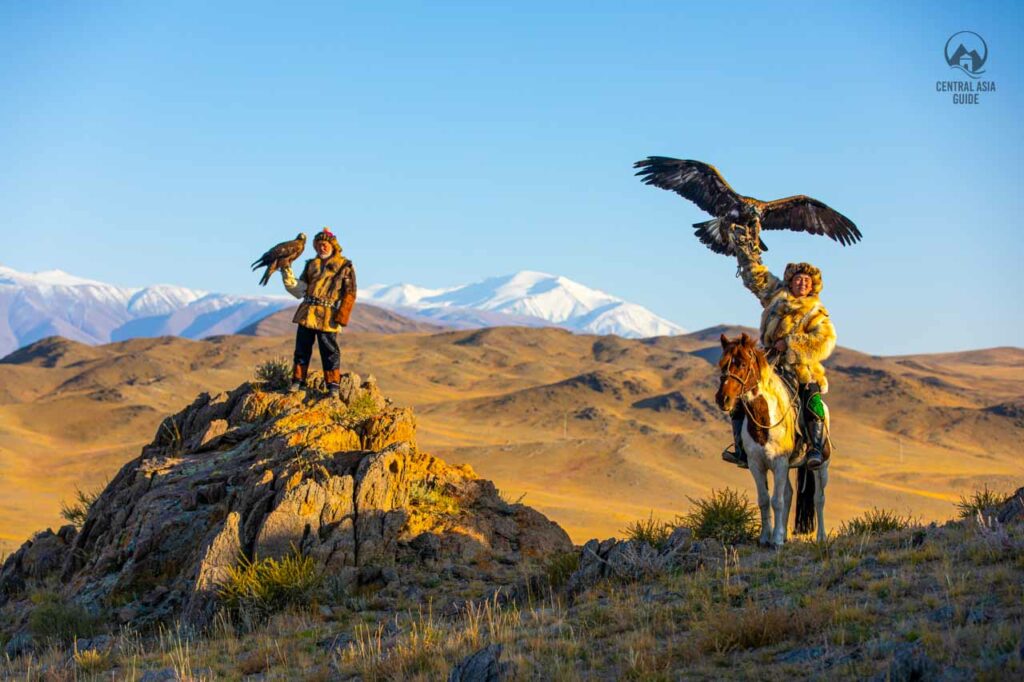
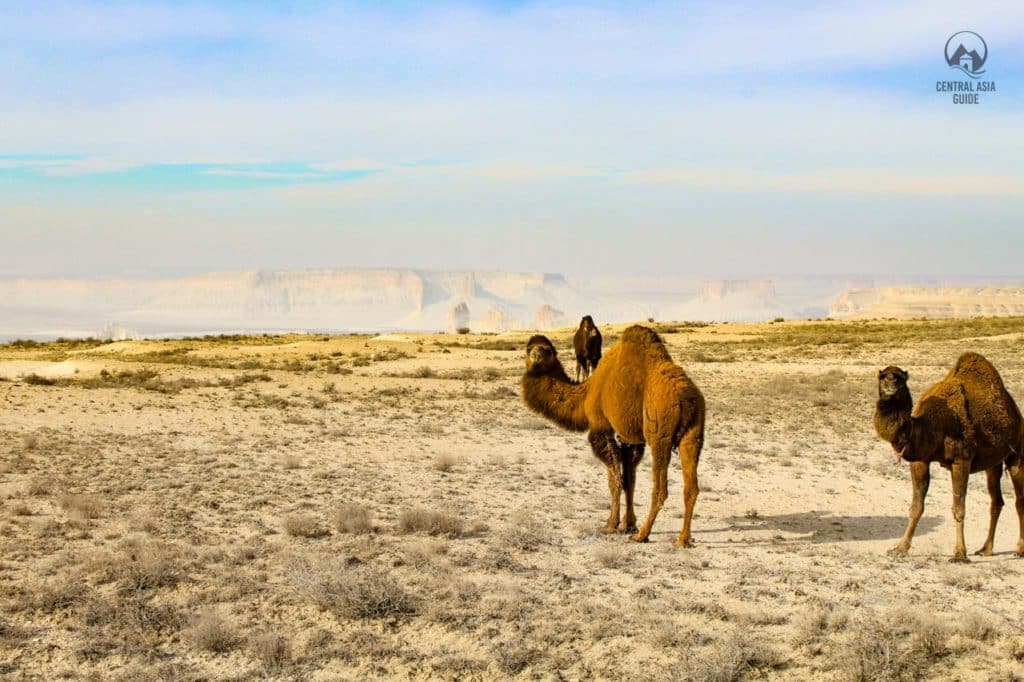
Kyrgyzstan, the Stronghold of Nomadic Traditions
Kyrgyzstan continues to practice its nomadic heritage, with many still performing the seasonal livestock movement between mountain pastures. The boz üi (yurt) remains an essential part of Kyrgyz life, known for its portability and resilience in harsh climates at high altitudes.
The Kyrgyz people preserve their nomadic roots through celebrations like the “Salburun Festival”, a traditional hunting event that showcases falconry with golden eagles, archery, and Taigan hound hunting. These games reflect ancient sporting traditions, including horseback archery and ulak tartysh (kok boru), a form of Central Asian polo. Moreover, the livestock remains central to their way of life, with herding and felt-making still widely practised. Visitors can participate in master classes to learn these crafts, gaining hands-on experience in nomadic traditions.
The Manas Epic, an oral masterpiece that honors the values and heroic tales of their ancestors. The epic is passed down by skilled storytellers known as manaschi, who continue to captivate audiences today. Tourism and education embrace Kyrgyz people to keep their nomadic heritage alive through offering visitors unique experiences such as horseback riding, yurt stays, and traditional Kyrgyz cuisine.
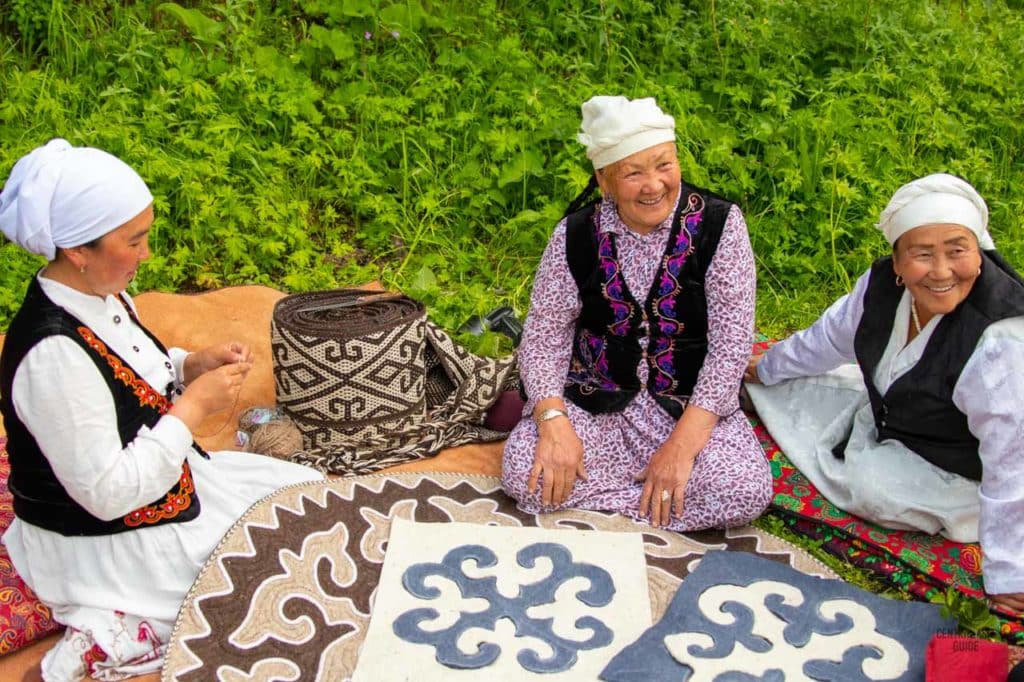
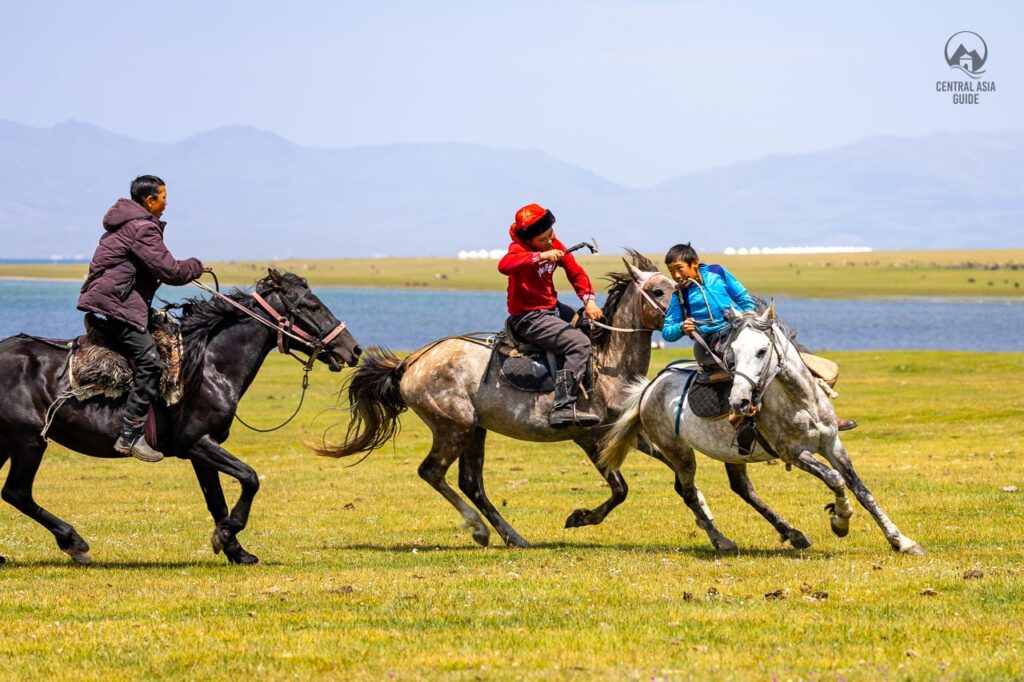
Uzbekistan, a Settled Cultures and Karaklpakstan
Compared to its neighbours, Uzbekistan has a stronger tradition of urban civilization, and cities like Samarkand and Bukhara were major centres of culture and trade along the Silk Road. However, Uzbekistan was also the homeland of great nomadic confederations like the Timurids and the Shaybanids, whose legacy is reflected in the art and administration of the country.
The Karakalpak, a semi-nomadic ethnic minority in western Uzbekistan, continue to preserve such traditions as ornate yurt decoration and livestock herding. Even though a sedentary lifestyle has dominated most of Uzbekistan, remnants of nomadic traditions are present in folk music, festivals, and rural life.
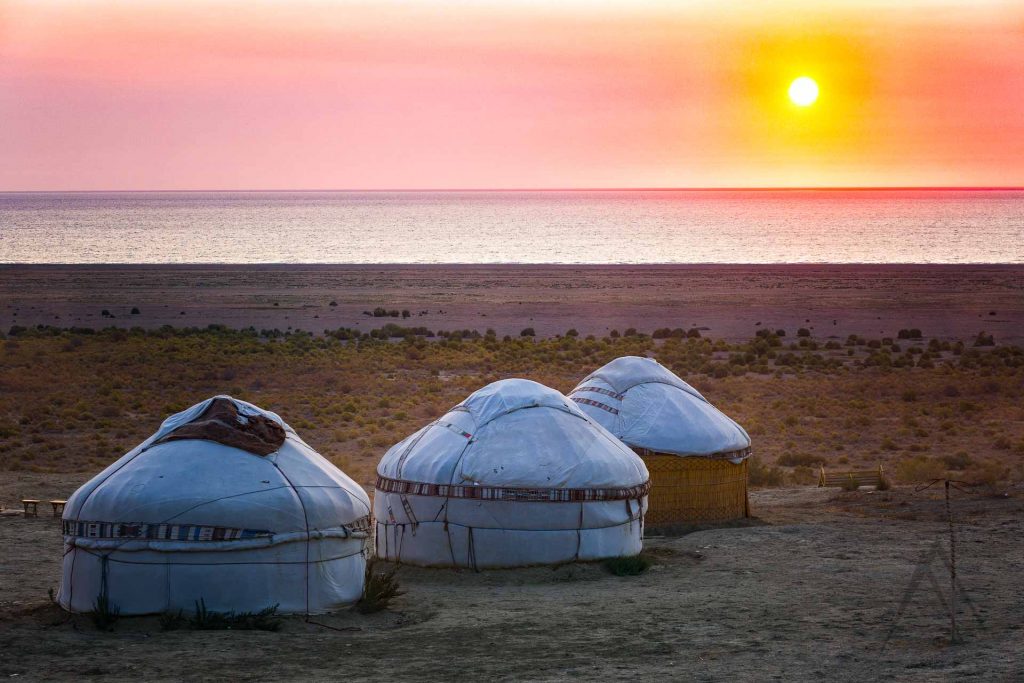
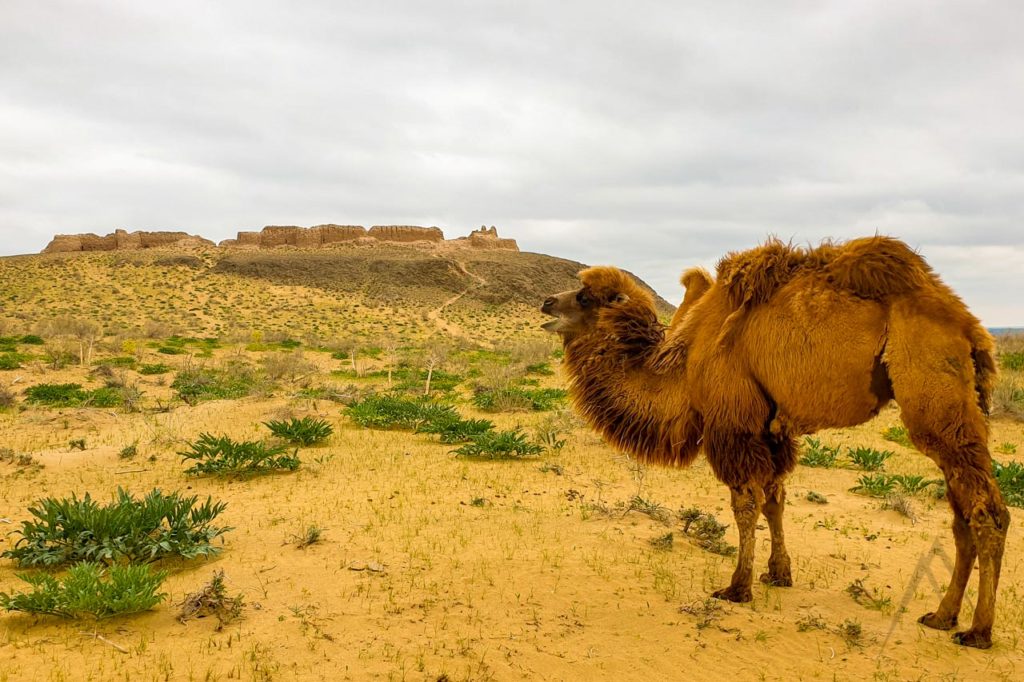
Tajikistan, the Nomadic Heritage in the Pamir Mountains
Tajikistan, a land of massive mountains and canyons, has a diverse history of settled and nomadic occupation. Particularly, the Pamir Kyrgyz, the ethnic subgroup in the mountainous Pamir Range, exist as nomads, herding yaks and sheep on far-off grasslands.
The Pamiris have developed unique traditions to fit their inhospitable environment, including skilled woolen dress and collective oral storytelling traditions. The nomadic influence is also observed in Tajik cuisine, with dishes like kurutob (a bread-and-yogurt dish) reflecting the simple yet nourishing meal of past herders.

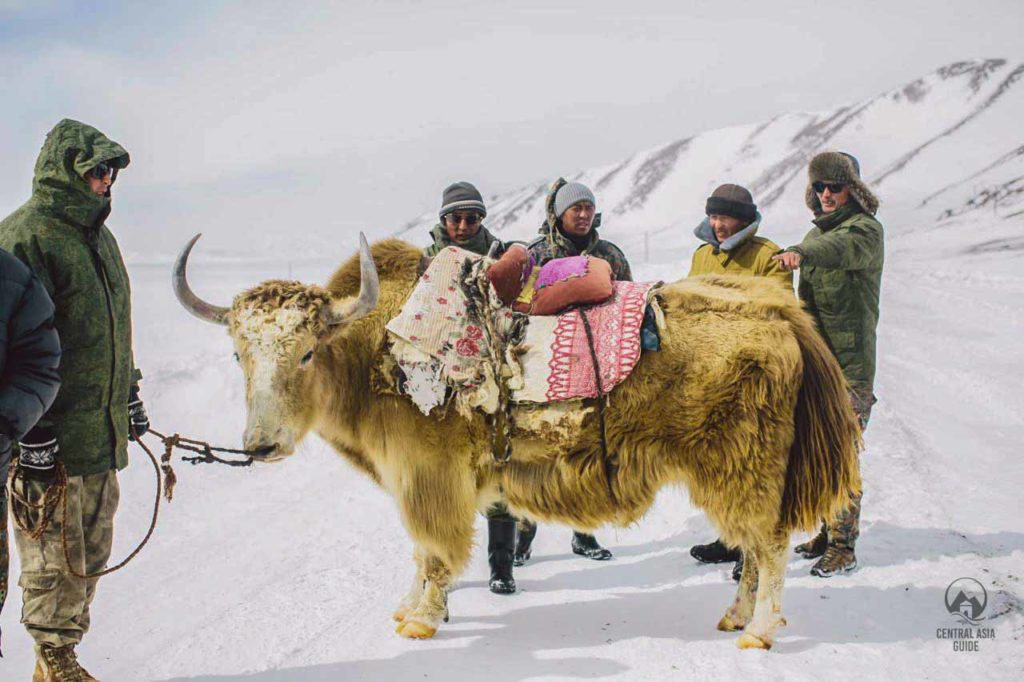
Turkmenistan, the Land of the Akhal-Teke Horse
Turkmenistan’s nomadic heritage is best knows by the Akhal-Teke horse, one of the world’s oldest and most revered horse breeds. Turkmen traditionally roamed the Karakum Desert, living in yurts and breeding livestock. To this day, many Turkmen still wear telpeks, sheepskin hats native to the country, as a nod to their pastoral ancestors. The two-yearly Turkmen Horse Festival celebrates the significance of horse culture within the nation’s past. Another legacy of the days of nomadism, traditional carpet production is still a vital component of Turkmen identity, with elaborate patterns symbolizing tribal heritage.
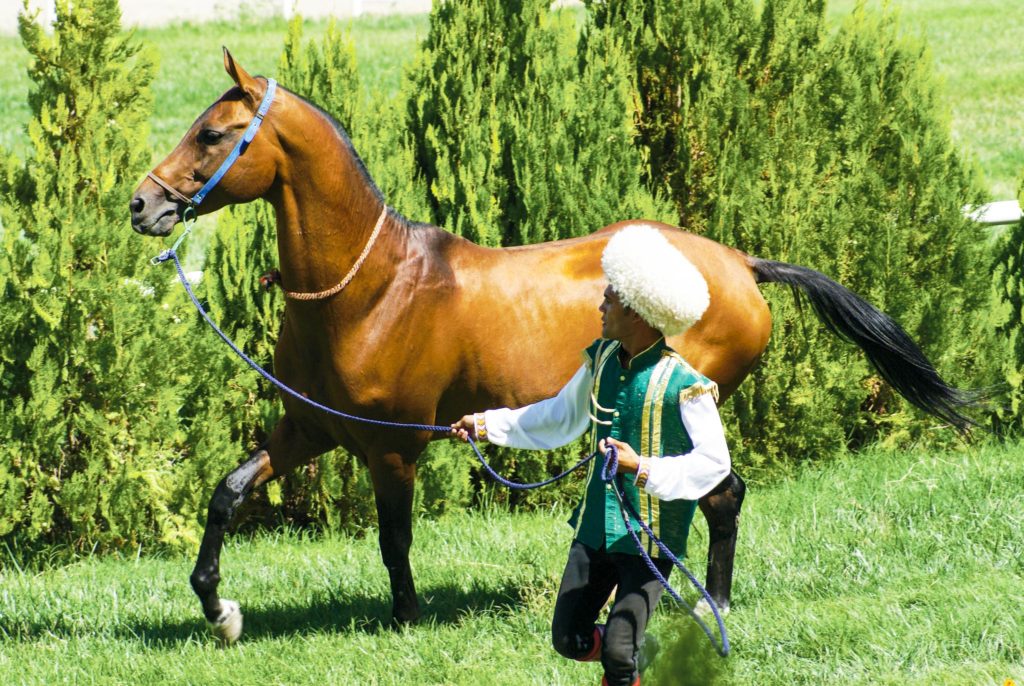
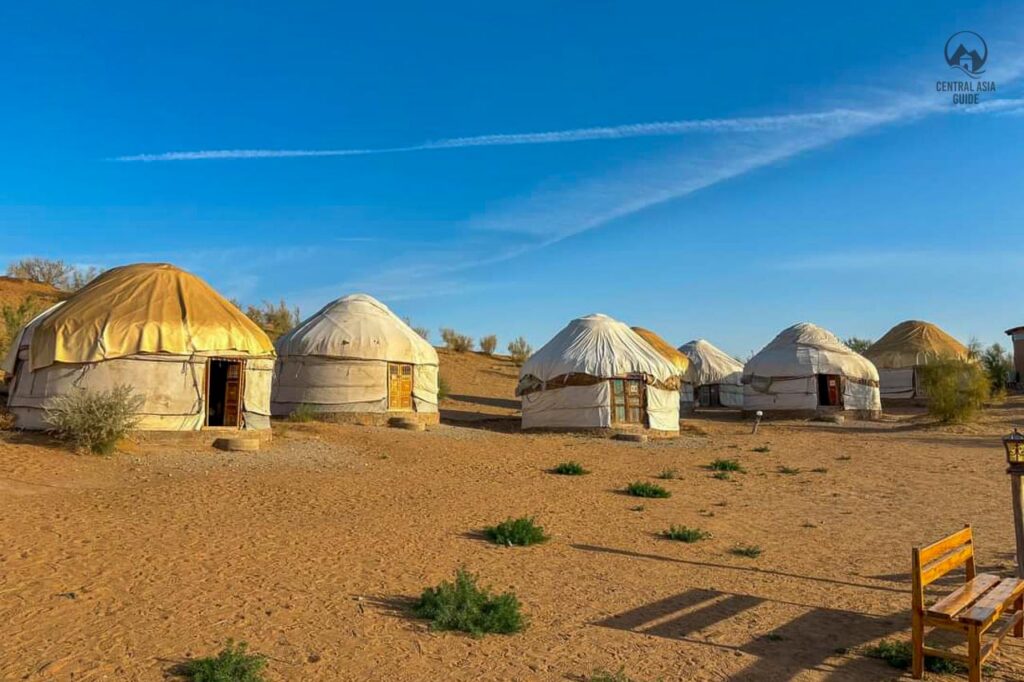
Best Tours of Central Asia
last update 20.3.2025